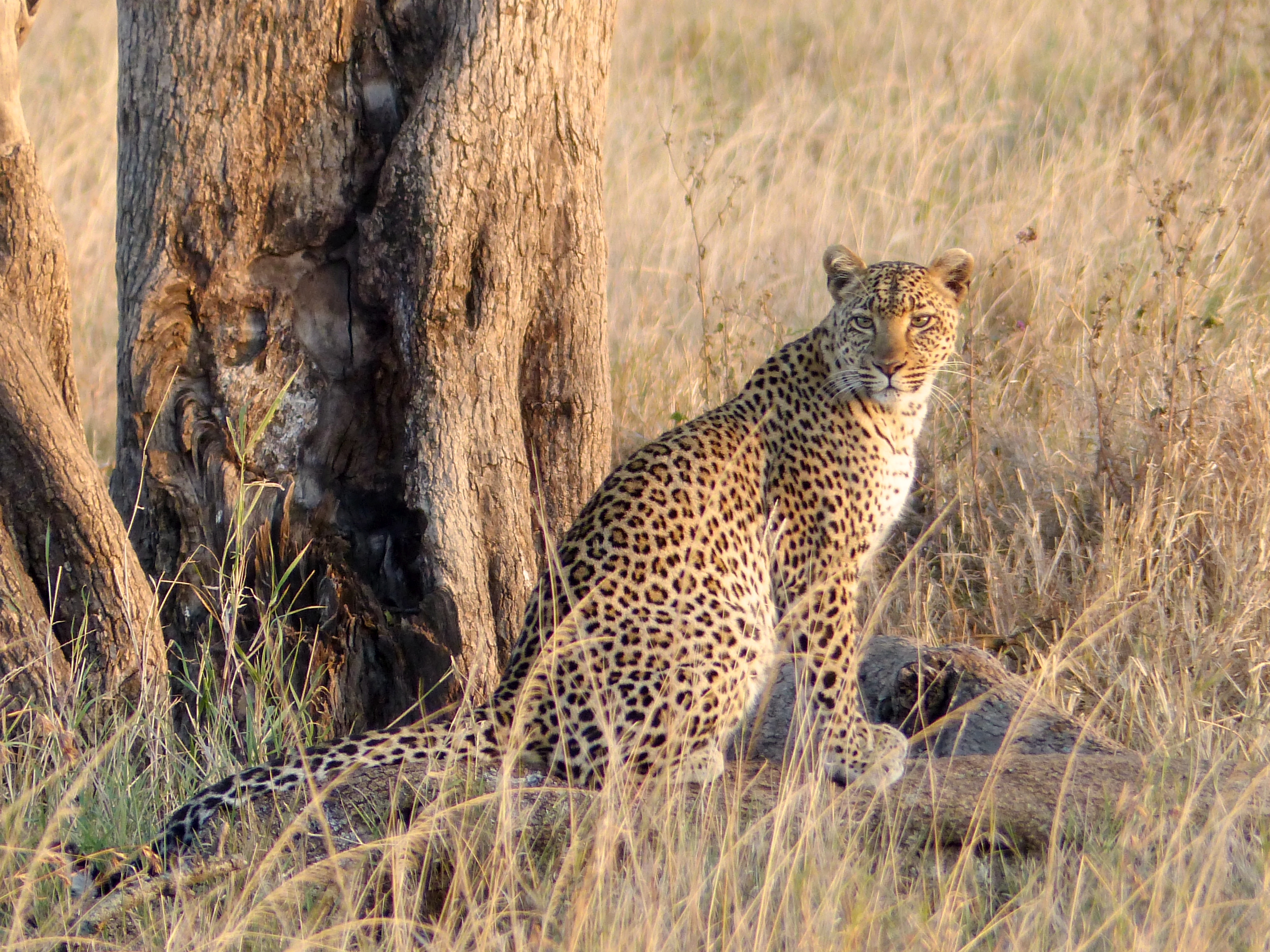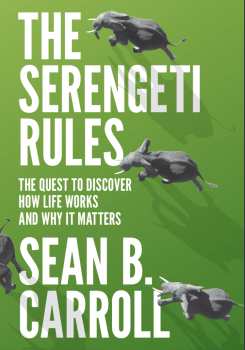In the Serengeti, Clues to Life’s Persistence on Earth
Sean B. Carroll connects cell regulation at the molecular level to rules that govern the Serengeti ecosystem.

Sitting leopard. Courtesy of Patrick Carroll
The following is an excerpt from The Serengeti Rules: The Quest to Discover How Life Works and Why It Matters, by Sean B. Carroll.
Human life has changed immensely over the millennia, but never so much or so quickly as in the last century. For almost the entire 200,000-year existence of our species, Homo sapiens, biology controlled us. We gathered fruits, nuts, and plants, hunted and fished for the animals that were available, and like the wildebeest or zebra, we moved on when resources ran low. Even after the advent of farming and civilization, and the development of cities, we were still very vulnerable to the whims of the weather, and to famine and epidemics.
But in just the last hundred years or so, we have turned the tables and taken control of biology. Scourges such as smallpox, a virus that killed as many as 300 million people in the first part of the 20th century (far more than in all wars combined) was not merely tamed, it was eradicated from the planet. Tuberculosis, caused by a bacterium that infected 70-90% of all urban residents in the 19th century and killed perhaps one in seven Americans, has nearly vanished from the developed world. More than two dozen other vaccines now prevent diseases that once infected, crippled, or killed millions, including polio, measles, and pertussis. Deadly diseases that did not exist in the nineteenth century, such as HIV/AIDS, have been stopped in their tracks by designer drugs.
Food production has been as radically transformed as medicine. While a Roman farmer would have recognized the implements on an American farm in 1900—the plow, hoe, harrow, and rake—he would not be able to fathom the revolution that subsequently transpired. In the course of just 100 years, an average yield of corn more than quadrupled, from about 32 to 145 bushels per acre. Similar gains occurred for wheat, rice, peanuts, potatoes, and other crops. Driven by biology, with the advent of new crop varieties, new livestock breeds, insecticides, herbicides, antibiotics, hormones, fertilizers, and mechanization, the same amount of farmland now feeds a population that is four times larger, but that is accomplished by less than 2% of the national labor force compared to more than 40% a century ago.
Our mastery, our control over plants, animals, and the human body comes from a still exploding understanding about the control of life at the molecular level. And the most critical thing we have learned about human life at the molecular level is that everything is regulated.
What I mean by that sweeping statement is:
– every kind of molecule in the body—from enzymes and hormones to lipids, salts, and other chemicals—is maintained in a specific range. In the blood, for example, some molecules are 10 billion times more abundant than other substances;
– every cell type in the body—red cells, white cells, skin cells, gut cells and more than 200 other kinds of cells—is produced and maintained in certain numbers; and
– every process in the body—from cell multiplication to sugar metabolism, ovulation to sleep—is governed by a specific substance or set of substances.

Diseases, it turns out, are mostly abnormalities of regulation, where too little or too much of something is made. For example, when the pancreas produces too little insulin, the result is diabetes, or when the bloodstream contains too much “bad” cholesterol, the result can be atherosclerosis and heart attacks. And when cells escape the controls that normally limit their multiplication and number, cancer may form.
To intervene in a disease, we need to know the “rules” to regulation. The task for biologists who study life at the molecular level is to figure out—to borrow some sports terms—the players (molecules) involved in regulating a process, and the rules that govern their play. Over the past 50 years or so, we have been learning the rules that govern the body’s levels of many different hormones, blood sugar, cholesterol, neurochemicals, stomach acid, histamine, blood pressure, immunity to pathogens, the multiplication of various cell types and much more. The Nobel Prizes in Physiology or Medicine have been dominated by the many discoverers of the players and rules of regulation.
Pharmacy shelves are now stocked with the practical fruit of this knowledge. Armed with a molecular understanding of regulation, a plethora of medicines have been developed to restore levels of critical molecules or cell types back to normal, healthy ranges.
But the molecular realm is not the only domain of life with rules, nor the only branch of biology to have undergone a transformation over the past half-century. Biology’s quest is to understand the rules that regulate life on every scale. A parallel, but less conspicuous revolution has been unfolding as a different tribe of biologists has discovered rules that govern nature on much larger scales. And these rules may have as much or more to do with our future welfare than all of the molecular rules we may ever discover.
This second revolution began to flower when a few biologists began asking some simple, seemingly naïve questions: Why is the planet green? Why don’t the animals eat all of the food? And what happens when certain animals are removed from a place? These questions led to the discovery that, just as there are molecular rules that regulate the numbers of different kinds of molecules and cells in the body, there are ecological rules that regulate the numbers and kinds of animals and plants in a given place.
I call these ecological rules the “Serengeti Rules” because that is one place where they have been well-documented through valiant, long-term studies, and because they determine, for example, how many lions or elephants live on an African savannah. They also help us to understand, for example, what happens when lions disappear from their ranges.
But these rules apply much more widely than to the Serengeti, as they have been observed at work around the world, and shown to operate in oceans and lakes, as well as on land. These rules are both surprising and profound: surprising because they explain connections among creatures that are not obvious, profound because these rules determine nature’s ability to produce the animals, plants, trees, and clean air and water upon which we depend.
Adapted from The Serengeti Rules: The Quest to Discover How Life Works and Why It Matters. Copyright © 2016 by Sean B. Carroll. With permission of the publisher, Princeton University Press. All rights reserved.
Sean B. Carroll is the author of The Serengeti Rules: The Quest to Discover How Life Works And Why It Matters (Princeton University Press, 2016). He’s also the vice president of science education at the Howard Hughes Medical Institute and professor of molecular biology and genetics at the University of Wisconsin, Madison in Madison, Wisconsin.